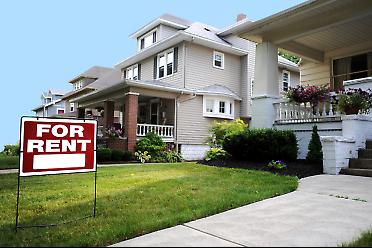Jeff Williams is a top-producing Realtor with Windermere in Tacoma specializing in the purchase and sale of historic and luxury homes. Click here to email Jeff or give him a call at 253-303-1135.

The demand for rental homes in Tacoma’s North End is high, with landlords charging as much as $1800-$2000 per month for a nice three bedroom house in a desirable location like Proctor or the Stadium District.
Many homeowners were able to secure extremely low interest rates by refinancing when the market was low, which prompts some to consider holding on to their primary residence as a rental property when purchasing their next home. Residential real estate in Tacoma’s North End is certainly a great investment. With the economy stabilizing and job growth expanding in our area, some are predicting as much as a 20% gain in market values over the next 3 years.
So whether it’s a property that you purchase specifically as a rental or a primary residence that you’ve decided to convert into a rental, it’s important to ask yourself a few questions before deciding to become a landlord.
5 Questions to Ask Yourself BEFORE Renting Your Home
1. Do you know how to screen potential tenants? Credit-worthiness? Employment and rental history? You can find out more about tenant screening at Bigger Pockets.
2. Will you allow pets? Cats? Dogs? Large? Small? Allowing pets will obviously increase your potential applicant pool, but pets can take a toll on a house which might cost you more than it’s worth in the long run.
3. If your house is located near the University of Puget Sound, will you rent to students? You may be able to earn more income if you rent by the room, but you can also expect more wear and tear on the property.
4. Have you talked to your insurance company to find out if there will be an increase in your premium if you convert to a landlord’s policy? You can find out options from our preferred insurance agent Jerry Hallman at Farmers.
5. Have you spoken with your accountant about the potential tax implications associated with owning and/or selling an investment property? Capital gains taxes are easier to avoid when selling a primary residence than they are when selling a rental property.
Another route to consider would be purchasing a property for use as a short term rental. The startup and maintenance costs (furnishings, utilities, supplies etc.) may be greater and the property will require more hands on attention, but the earning potential of a daily, weekly or monthly rental will be higher. There are a number of sites available for marketing a short term rental, including www.airbnb.com, www.homeaway.com and www.vrbo.com. Lastly, if you’re reluctant to deal with the active management of a rental property, you can always enlist the assistance of a property management company. Locally we recommend Parkwood Property Management and McNally Property Management . If you’re interested in purchasing an investment property, let us know. We’d be happy to help you navigate the waters.
Mark Pinto is a top-producing Realtor with Windermere in Tacoma specializing in the purchase and sale of historic and luxury homes. Click here to e-mail Mark or feel free to give him a call at (253) 318-0923.

The Proctor District is one of North Tacoma’s most popular neighborhoods. Historic homes, great public schools, tree lined streets, views of the water and a charming central business district are just a few of the things that make this neighborhood so special. For those who aren’t familiar with Proctor (and for those who are already fans), I thought I’d share some of my favorite things about the place we call home.
Metropolitan Market – Met Market is the undeniable anchor of the Proctor District. This upscale grocery store caters to a sophisticated palate, with many locally sourced products, an outstanding cheese department and a wine steward. Met Market could feel some heat if Whole Foods delivers on their promise to open a store in University Place, but the neighborhood feel at the Met will always be hard to beat.
Chalet Bowl – This family owned and operated 12-lane bowling alley “strikes” a wonderful balance between old school Americana and new school hip. The lanes are well maintained, the staff is extremely friendly and the weekly bargain specials are hard to resist. Two words. Glow Bowling.
Wheelock Public Library – This local library has been serving the community since 1927 and is much used and much loved by children and adults alike. An iconic bronze statue of Tacoma pioneer and early businessman Allen Mason located adjacent to the library is often whimsically decorated to befit the season.
Puget Park – Located at the corner of Proctor and N. 31st Street, Puget Park was one of the first green spaces to be donated to the city of Tacoma for public use in 1888. The park features an updated play area and a picnic-perfect grassy knoll. If you’re feeling adventurous, you can follow a trail down through Puget Gulch to the waterfront for a wilderness experience right in the heart of the city.
Blue Mouse Theater – Originally opened in 1923 and now listed on the National Register of Historic Places, the Blue Mouse is Washington State’s oldest continuously operating movie theater. A group of local activists and preservationists purchased and restored the theater in 1993. Dale Chihuly reportedly designed the blue neon mice that grace the marquis.
Mark Pinto is a top-producing Realtor with Windermere in Tacoma specializing in the purchase and sale of historic and luxury homes. Click here to e-mail Mark or feel free to give him a call at (253) 318-0923.